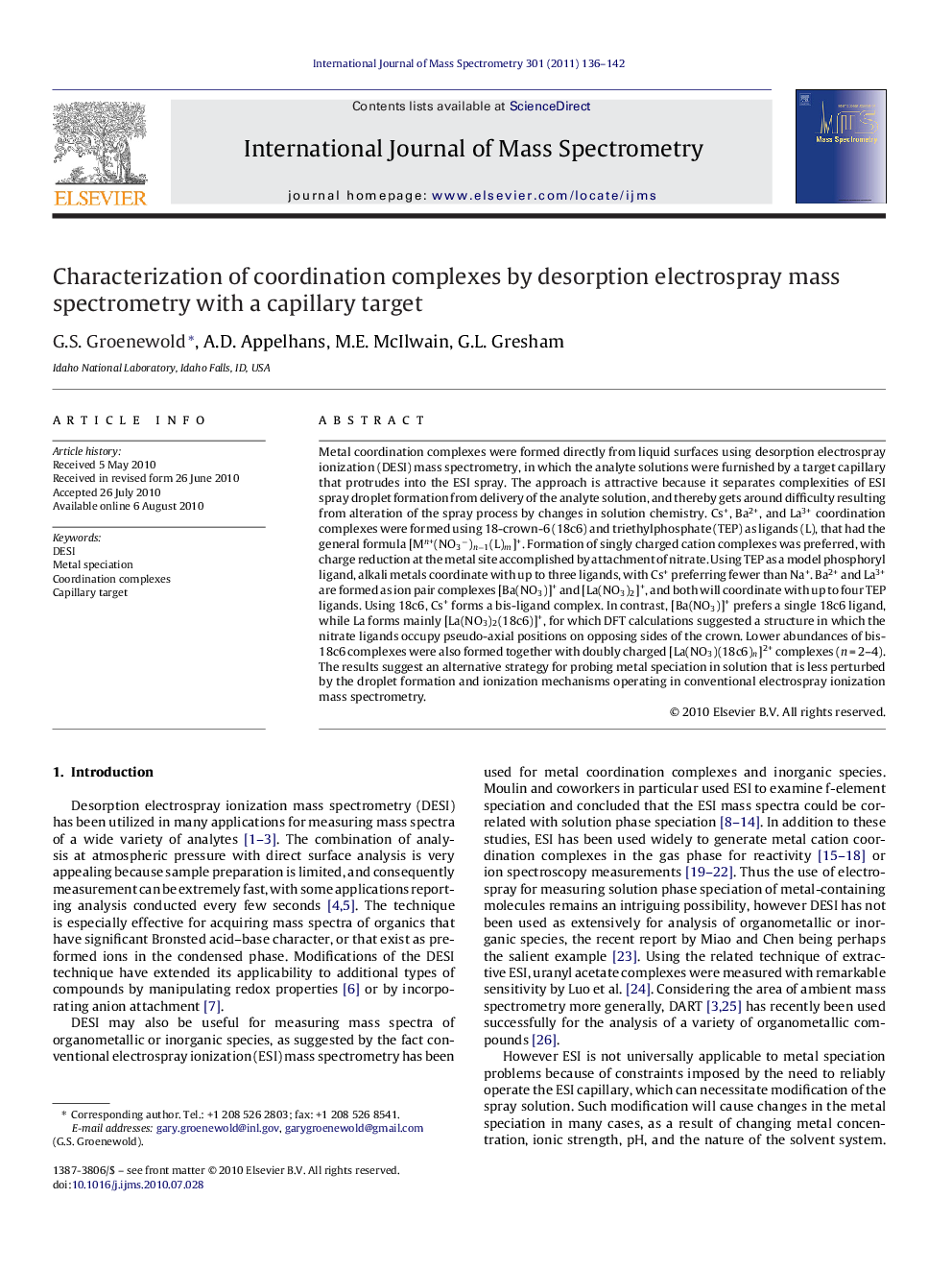| کد مقاله | کد نشریه | سال انتشار | مقاله انگلیسی | نسخه تمام متن |
|---|---|---|---|---|
| 1194479 | 1492314 | 2011 | 7 صفحه PDF | دانلود رایگان |

Metal coordination complexes were formed directly from liquid surfaces using desorption electrospray ionization (DESI) mass spectrometry, in which the analyte solutions were furnished by a target capillary that protrudes into the ESI spray. The approach is attractive because it separates complexities of ESI spray droplet formation from delivery of the analyte solution, and thereby gets around difficulty resulting from alteration of the spray process by changes in solution chemistry. Cs+, Ba2+, and La3+ coordination complexes were formed using 18-crown-6 (18c6) and triethylphosphate (TEP) as ligands (L), that had the general formula [Mn+(NO3−)n−1(L)m]+. Formation of singly charged cation complexes was preferred, with charge reduction at the metal site accomplished by attachment of nitrate. Using TEP as a model phosphoryl ligand, alkali metals coordinate with up to three ligands, with Cs+ preferring fewer than Na+. Ba2+ and La3+ are formed as ion pair complexes [Ba(NO3)]+ and [La(NO3)2]+, and both will coordinate with up to four TEP ligands. Using 18c6, Cs+ forms a bis-ligand complex. In contrast, [Ba(NO3)]+ prefers a single 18c6 ligand, while La forms mainly [La(NO3)2(18c6)]+, for which DFT calculations suggested a structure in which the nitrate ligands occupy pseudo-axial positions on opposing sides of the crown. Lower abundances of bis-18c6 complexes were also formed together with doubly charged [La(NO3)(18c6)n]2+ complexes (n = 2–4). The results suggest an alternative strategy for probing metal speciation in solution that is less perturbed by the droplet formation and ionization mechanisms operating in conventional electrospray ionization mass spectrometry.
Desorption electrospray mass spectrometry is used with a capillary target to generate metal coordination complexes directly from sample solutions.Figure optionsDownload high-quality image (122 K)Download as PowerPoint slide
Journal: International Journal of Mass Spectrometry - Volume 301, Issues 1–3, 30 March 2011, Pages 136–142